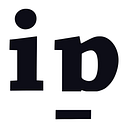Pixartprinting strengthens and diversifies its production of on-demand labels
With the installation of a Durst Tau 330 RSC, the online printing giant opens a new round of investment in technologies for printing, finishing and converting labels
Pixartprinting is the Italian online printing company that, more than any other, has been able to assert its model and brand even outside the national borders. The company has been so effective that it attracted the interest of the Cimpress group, which it has been part of since 2014 and where it plays the role of primary research and development hub. Many of the Venetian company’s technological choices are borrowed by other companies in the group, which includes giants such as Vistaprint and Exaprint.
Born as a prepress service provider in the mid-nineties, Pixartprinting already began expanding its offering in its early years, adding large format printing. Then, during the 2000s, it gradually introduced digital sheet-fed printing, and, in 2012, it launched a major investment program focused on sheet-fed offset technology. Packaging and labels, also introduced in the last decade, are now two of the most critical development and investment areas for the company. To support their growth, Pixartprinting installed a Durst Tau 330 RSC in August 2019.
One year later, we met Umberto Silvan and Andrea Stevanato, Research & Innovation Manager and Labels & Stickers Supervisor of Pixartprinting, respectively, to learn more about the company’s progress in this field.
From a side product to a consolidated business
Pixartprinting started producing printed and die-cut self-adhesive products between 2008 and 2009. At the same time, the company expanded its range of sheet-fed printed products, installing some HP Indigo presses and a Zünd M-800, with the automatic sheet-feeder, for cutting and kiss-cutting self-adhesive materials. Stickers quickly became a thriving business, prompting the company to invest in a total of six dedicated Zünd cutting systems.
The shift to roll label production came in 2012 when Pixartprinting introduced its first Epson SurePress L-4033A, featuring 720 dpi resolution (1,440 x 720 dpi on film), six-color configuration (CMYKOG), and water-based inks. The press, capable of printing on rolls up to 330 mm wide, is flanked by a SEI Laser Labelmaster converting line.
Once the capacity of its first SurePress was saturated, Pixartprinting installed a second, and then a third. At this stage, the growth potential of labels became evident, but so did the technical limitations of equipment with a top speed of 5 m/min., making the production model difficult to scale.
“We took satisfaction from it, but at the third press, we realized we needed something else,” Silvan explains. “We had to aim for something much more productive, but without sacrificing the quality and the special optical and tactile effect we had accustomed customers to.”
Thus, in 2014, Pixartprinting installed an HP Indigo WS6800, which preserved the high level of perceived quality and the capability of handling 330-mm-wide roll materials while expanding the range of usable substrates and increasing the production speed to 30 m/min. At the same time, the company installed a Spartanics laser converting line. Then, in 2015, although volumes did not justify the purchase, the company installed a second HP Indigo WS6800.
“We weren’t used to the management and maintenance model of a web-fed HP Indigo, which we initially found to be rigid and complex, prompting us to equip ourselves with a backup system,” Silvan continues. “Over time, however, we refined the technique, significantly increasing the overall effectiveness of the two presses.”
The leader of this change of pace was Andrea Stevanato, already working on Pixartprinting’s sheetfed HP Indigo, who put his experience at the Labels & Stickers department’s service, soon becoming its manager.
A digital label converter shaped on online sales
The label production department occupies only a small portion of the 35,000 square meters of Pixartprinting’s headquarters in Quarto d’Altino (VE). Yet, it is fully comparable to a full-cycle label factory, operating on three shifts, seven days a week. The printing presses are combined with the SEI Laser Labelmaster and three Spartanics converting lines, all equipped with film laminating stations, flexo units for protective coating, laser cutting, and matrix waste removal. Their configuration includes corona treatment, used to prepare some printed materials for lamination. Moreover, two of the converting lines are equipped with an exclusive conveyor belt to easily collect finished stickers.
Pixartprinting’s offer includes over twenty different papers and films, each of which can be combined with various lamination options (glossy, matte, and soft-touch) or varnishing, capable of satisfying the needs of a variety of clientele, composed mainly of small PSPs, print shops and label converters as well as a multitude of end-users in the most diverse product sectors, from confectioneries to small wine makers.
Pixartprinting prints and converts thousands of square meters of self-adhesive material daily, equivalent to several hundred orders. These numbers increase in conjunction with any promotions that may be active on the website.
The printed reels, each containing dozens of orders, are finished on the converting lines and, with the help of automatic slitting and rewinding modules, separated into individual reels ready for shipment. Most of the orders are delivered on 330 mm reels, while a limited number of orders also include longitudinal cutting.
Industrial UV inkjet technology to raise the bar
In 2017, the constant growth in volumes on the two HP Indigo presses led the company’s management to evaluate new investments, entrusting Umberto Silvan and his research and development team to analyze the available options.
“At Labelexpo Europe 2017, we saw the launch of countless UV inkjet presses for label printing and decided to test them. First, we wanted to get an idea of how inkjet, ElectroInk, and toner were evolving,” say Silvan and Stevanato. “We carried out intensive tests on a lot of equipment, using our files and materials, which we then brought to the company for finishing and analysis of financial and productivity indicators.”
The analysis, concluded in February 2019, convinced Pixartprinting to invest in a Durst Tau 330 RSC. Launched in 2017, the Durst press is equipped with 1,200-dpi Fujifilm Samba printheads with 2-, 4- and 6-pl variable drop; has a 6-color configuration (CMYK+OW); and achieves a linear speed of 80 m/min.
“To serve a professional customer base, we will soon introduce new converting and slitting machines, and inspection systems.”
– Umberto Silvan, Research & Innovation Manager of Pixartprinting
What convinced Pixartprinting of the soundness of Durst’s proposal is the combination of quality, productivity, low production costs, and overall system reliability.
“In the financial statement of a digital narrow web, the main costs are material, ink, energy, and operators. The Tau 330 RSC offers us advantages on all these fronts,” says Stevanato. “The operator simply loads the 2,000-meter reel and unloads it at the end of the process, while carrying out other activities in the meantime. The only activity required is a morning preparation and cleaning, then the press starts and produces non-stop.”
On the software front, Durst supported Pixartprinting in integrating the Tau 330 RSC into its proprietary workflow. That provides total automation of the process, from order reception to preflight, step & repeat, and submission to the appropriate print queue for the job’s material. Then, the operator only has to confirm queue settings on the machine’s control panel and send the jobs to print.
A “different” quality and enabling productivity
Having started its label production with systems recognized for high quality, environmental sustainability, and quality comparable to offset, Pixartprinting initially looked at UV inkjet technology with mistrust. However, the quality of texts, images, and barcodes produced by the Tau 330 RSC exceeded all expectations. Even its low-migration, odor-free inks proved to be compatible with all the online printer’s products, although the Durst platform is mainly used for printing on coated papers and films.
“You cannot say that the quality of Tau RSC is higher or lower. It is simply different, and customers immediately appreciated it,” Stevanato explains.
On the quality front, one of Pixartprinting’s main challenges is to achieve the optimal color and density, meter after meter and job after job, without stopping or slowing down the production to make corrections and calibrations. On the same reel, in fact, the company produces from a few dozen to over a hundred different jobs, whose graphic layouts can contain spot colors, solid backgrounds, photographic images, and textures of all kinds. Here too, Durst’s software development team has made the print engine more responsive and able to support Pixartprinting’s feverish job rotation.
Even more than quality, the crucial factors that led the company to choose the Durst platform are the reliability and productivity of the Tau 330 RSC, which at 80 m/min has more than doubled the production capacity of the department, quickly absorbing more than 70% of the total volume of labels printed in the company.
“We had to make ourselves more competitive and aggressive, even in anticipation of the insourcing of many products now outsourced by the other divisions of Cimpress,” explains Silvan. “To do this, we opted for a technology with an industrial soul.”
Towards new technical, application, and market goals
An increasingly diverse and demanding clientele, and the desire to offer its customers a single marketplace for purchasing labels, are guiding Pixartprinting in the further development of the Labels & Stickers department. Among the priorities are an increase in production capacity and the ability to provide labels in reels, plain or embellished, compatible with industrial labeling lines.
“To offer premium products for the wine and the cosmetics sectors, it is essential to apply hot foil, embossing, and spot varnish,” Silvan explains. “Likewise, to serve a professional customer base, we will soon introduce new converting and slitting machines, and inspection systems.”
With this in mind, Pixartprinting is investigating the market to identify the most appropriate technologies to deliver the highest level of quality, productivity, cost-effectiveness, and scalability in label production. Always open to suggestions and influences, the company promotes the coexistence of more suppliers and more technologies to offer the best technical solution to the customer.
“We are attentive and receptive to the manufacturers’ moves. Some, including Durst, are rapidly closing their stability gaps and making the technology user-friendly even for less experienced operators,” Silvan points out. “On the other hand, too few are developing machines designed for 100% digital production, where frequent material changes, quick quality checks, and lightning-fast setups are the standard.”
For Pixartprinting, the biggest challenge is to make any technology compatible with its business model — based on online sales, 24/7 production, and shipping within hours of ordering. Therefore, beyond individual machines, in the coming years, the company’s R&D team will be increasingly focused on integration and two-way communication between printing and finishing devices. A theme that — despite the spread of metadata and cross-vendor languages, such as JDF — continues to divide manufacturers and is an obstacle for the most advanced and competitive end-users.

